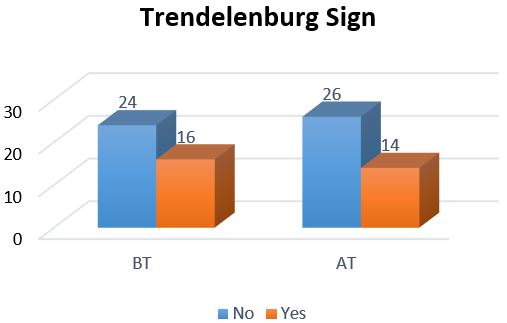Evaluation of Rasnadi Kwatha Sadhita Ksheera Basti (Modified Kala Basti Schedule) in Asthimajjagata Vata (Avascular Necrosis of Hip Joint)
DOI:
https://doi.org/10.21760/jaims.9.7.6Keywords:
Asthimajjagata Vata, Avascular necrosis, Ksheera Basti, Kala BastiAbstract
Asthimajjagata Vata (Avascular necrosis of the hip joint) is a progressively common cause of musculoskeletal debility and it’s bearing a major diagnostic and therapeutic challenge, although patients are initially asymptomatic or with mild symptoms, avascular necrosis of the femoral head usually progresses to joint destruction, requiring total hip replacement, usually before the fifth stage. If the disease is untreated then the pain progressively increases and worsens with time and use of join. In the later stage pain increases on rest which may be worse during night and may be associated with morning stiffness also. The preventative, promotive, rejuvenating, and radical treatment qualities of Panchakarma make it a very special therapeutic process. In present study, 40 patients diagnosed with Asthimajjagata Vata (Avascular necrosis of the hip joint) were administered with 768 ml. Rasnadi Kwatha Sadhita Ksheera Basti with 96ml. of Dhanvantara Taila in modified Kala Basti schedule. Assessment was done on subjective parameters and obtained data was analysed using appropriated statistical tests and conclusion was made that the Rasnadi Kwatha Sadhita Ksheera Basti is significant in the cases of Asthimajjagata Vata (Avascular necrosis of the hip joint). The therapy provided Mild improvement in 77.50% and 20.00% of the patients were showed moderate improvement, no improvement was found in 2.50% patient. By this we can conclude that the drug is effective in controlling the Asthimajjagata Vata (Avascular necrosis of the hip joint), in short duration of therapy.
Downloads
References
Kaviraaja Atrideva Gupta edited Vidyotini Hindi commentary of Astangahrdayam Sutra Sthana 01 chapter and 20 Shloka reprint edition 2020 Pg.12.
Kashinath shastri, Gorakhnath Chaturvedi, editors. Vidyotini, Hindi commentary of Charaka Samhita Chikitsa Sthana chapter 28 verse no.33 2020 Edn. Varanasi: Chaukhambha Bharati academy. 2020, 712Pg.
A role of Majja Basti (Dashmoola Siddha) in the management of avascular necrosis (AVN) of femoral head: a case study by priya pantel world journal of pharmaceutical research 2021.
Kashinath shastri, Gorakhnath Chaturvedi, editors. Vidyotini, Hindi commentary of charaka Sutra Chikitsa Sthana chapter 28 verse no27. 2019 Edn. Varanasi: Chaukhambha Bharati academy. 2019, 503Pg.
Pandit Sri Brahma Shankar Misra edited with Vidyoditni Hindi commentary notes in introduction index etc bhavaprakasha Chikitsa Prakaranam 8 chapter 24 Shloka 342 reprint 2011 edn. Varanasi: Chaukhambha Bharati Academy 2011, 271pg.
Kaviraaja Atrideva Gupta edited Vidyotini Hindi commentary of Astangahrdayam Sharira Sthana 2 chapter and 47-52 Shloka reprint edition 2020. 247, 248pg.
Charak Samhita of Agnivesha revised by Charak and Dradhabala with introduction by Vadiya Samrata Shri Satya Narayan Sastri, with elaborated Vidyotini Hindi commentary by Pt. Kashinath Sastri Dr.Gorakha Natha Chaturvedi part-1, 17 Published by Chukhamba Bharti Academy Varanasi, Reprint 2011. Charaka Sidhi Sthan Bastisutriya sidhi chapter - 3/17-18 16
Astanga Hridayam Vidyotini Hindi commentary by Kaviraj Atri-deva Gupta Vidyaalankar, edited by Vadiya Yadunandana Upadhyaya published by Chaukhamba Prakashan Varanasi. Reprint 2014 Sutra Sthan Bastividhi Adhyaya chapter-19/22-24.
Sushruta Samhita Ayurveda Tattva Sandipika Hindi commentary by Kaviraja Ambikadutta Shastri forward by Dr. Pranajivana Manekchanda Mehta Part-1, published by Chaukhambha Sanskrit Bhawan Varanasi. Reprint 2010, Chikitsha Sthan, Anuvashana Uttar Basti Chikitsha adhikar chapter-37/61-65
Kashinath shastri, Gorakhnath Chaturvedi, editors. Vidyotini, Hindi commentary of Charaka Samhita Siddhi Sthana chapter 01 verse no.54 2020 Edn. Varanasi: Chaukhambha Bharati academy. 2020 897Pg.















